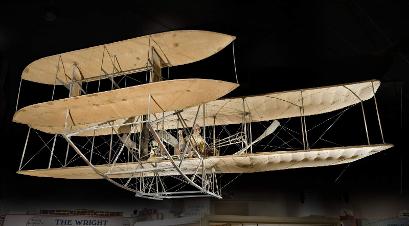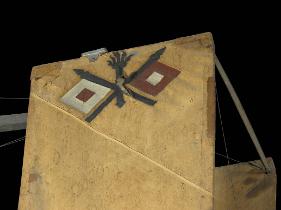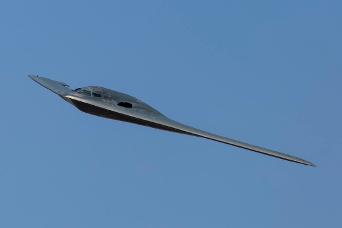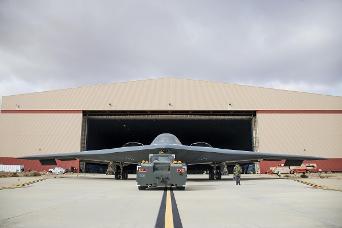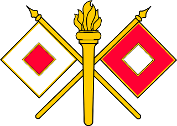
Aeronautical Division,
U.S. Signal Corps
The Aeronautical Division, Signal Corps (1907–1914) was the first heavier-than-air military aviation organization in history and the progenitor of the United States Air Force. A component of the U.S. Army Signal Corps, the Aeronautical Division procured the first powered military aircraft in 1909, created schools to train its aviators, and initiated a rating system for pilot qualifications. It organized and deployed the first permanent American aviation unit, the 1st Aero Squadron, in 1913.
Aviation Section, U.S. Signal Corps
The Aviation
Section, Signal Corps, was the aerial warfare service of the
United States from 1914 to 1918, and a direct statutory ancestor of
the United States Air Force. It absorbed and replaced the
Aeronautical Division, Signal Corps, and conducted the activities of
Army aviation until its statutory responsibilities were suspended by
President Woodrow Wilson in 1918. The Aviation Section organized the
first squadrons of the aviation arm and conducted the first military
operations by United States aviation on foreign soil.
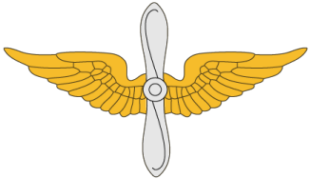
United States Army Air
Service
The United States Army Air Service (also known as the "Air Service", "U.S. Air Service" and before its legislative establishment in 1920, the "Air Service, United States Army") was the aerial warfare service component of the United States Army between 1918 and 1926 and a forerunner of the United States Air Force. It was established as an independent but temporary branch of the U.S. War Department during World War I by two executive orders of President Woodrow Wilson: on May 24, 1918, replacing the Aviation Section, Signal Corps as the nation's air force; and March 19, 1919, establishing a military Director of Air Service to control all aviation activities. Its life was extended for another year in July 1919, during which time Congress passed the legislation necessary to make it a permanent establishment. The National Defense Act of 1920 assigned the Air Service the status of "combatant arm of the line" of the United States Army with a major general in command.

United States Army Air
Corps
The United States Army Air Corps (USAAC) was the aerial warfare service component of the United States Army between 1926 and 1941. The Air Corps was renamed by the United States Congress largely as a compromise between the advocates of a separate air arm and those of the traditionalist Army high command who viewed the aviation arm as an auxiliary branch to support the ground forces. Although its members worked to promote the concept of air power and an autonomous air force in the years between the world wars, its primary purpose by Army policy remained support of ground forces rather than independent operations.
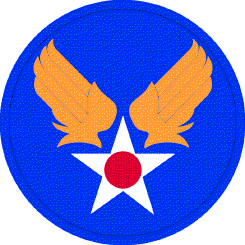
United States Army Air Forces
The United States Army Air Forces (USAAF or AAF), officially known as the Army Air Forces, was the aerial warfare service component of the United States Army during and immediately after World War II (1939/41–1945), successor to the previous United States Army Air Corps and the direct predecessor of the United States Air Force

United States Air Force
The United States Air Force (USAF) is the aerial and space warfare service branch of the United States Armed Forces. It is one of the seven American uniformed services. Initially formed as a part of the United States Army on 1 August 1907, the USAF was established as a separate branch of the U.S. Armed Forces on 18 September 1947 with the passing of the National Security Act of 1947.
While there are many aircraft they have been introduced through the years, we have chosen the world's first military aircraft, the 1909 Wright Military Flyer Model A, designated as Signal Corps No. 1 & demonstrated June 28, 1909 for the Aeronautical Division, Signal Corps and the Northrop Grumman B-2 Spirit, which was introduced in 1997 and first used in combat in 1999 as our examples.
In
December 1909, Brig. Gen. James Allen, Chief Signal Officer of the
U.S. Army, summoned 1st Lt. Foulois to his office and informed him
that he was to become the sole flyer of the newly acquired Wright
military airplane, designated Signal Corps No. 1. "Take plenty
of spare parts," he told the young officer, "and teach
yourself to fly."
The U.S. Army Signal Corps specified
that its first airplane should have a range of 125 miles, a minimum
speed of 40 miles per hour, and could remain aloft for one hour while
carrying two people. When those requirements were met by Orville and
Wilbur Wright, the Signal Corps purchased "Signal Corps No. 1"
for $30,000 and the Wright Brothers delivered it on August 2, 1909.
Shortly thereafter, the Wrights trained lieutenants Frederic E.
Humphreys and Frank P. Lahm at College Park, Maryland, while Lt
Foulois received about one hour's worth of instruction. After a
November 5, 1909 plane crash, Signal Corps chief Brig Gen James Allen
ordered Signal Corps No. 1 and Lt Foulois to Fort Sam Houston, Texas,
to train in weather more conducive to flying.
87 years later in 1996, the Northrop Grumman B-2 Spirit, also known as the Stealth Bomber was introduced. It is an heavy strategic bomber, featuring low observable stealth technology designed for penetrating dense anti-aircraft defenses; it is a flying wing design with a crew of two.The bomber can deploy both conventional and thermonuclear weapons, such as up to eighty 500-pound class (230 kg) Mk 82 JDAM Global Positioning System-guided bombs, or sixteen 2,400-pound (1,100 kg) B83 nuclear bombs. The B-2 is the only acknowledged aircraft that can carry large air-to-surface standoff weapons in a stealth configuration.
